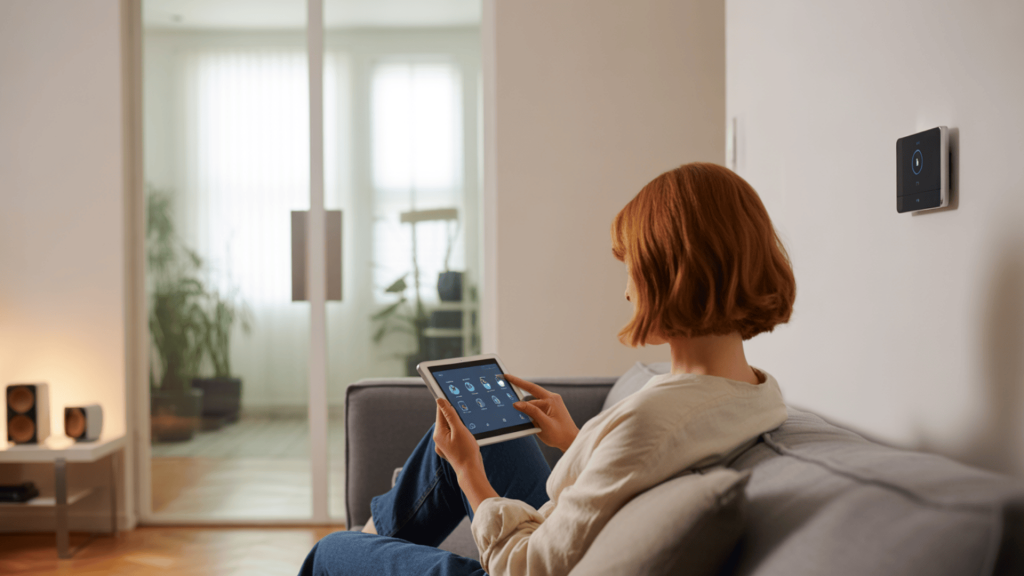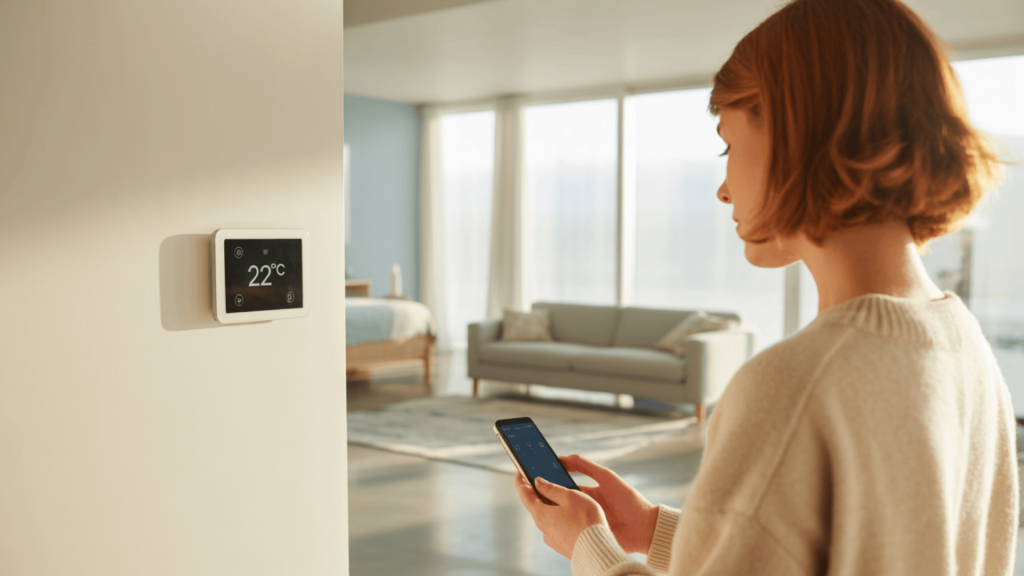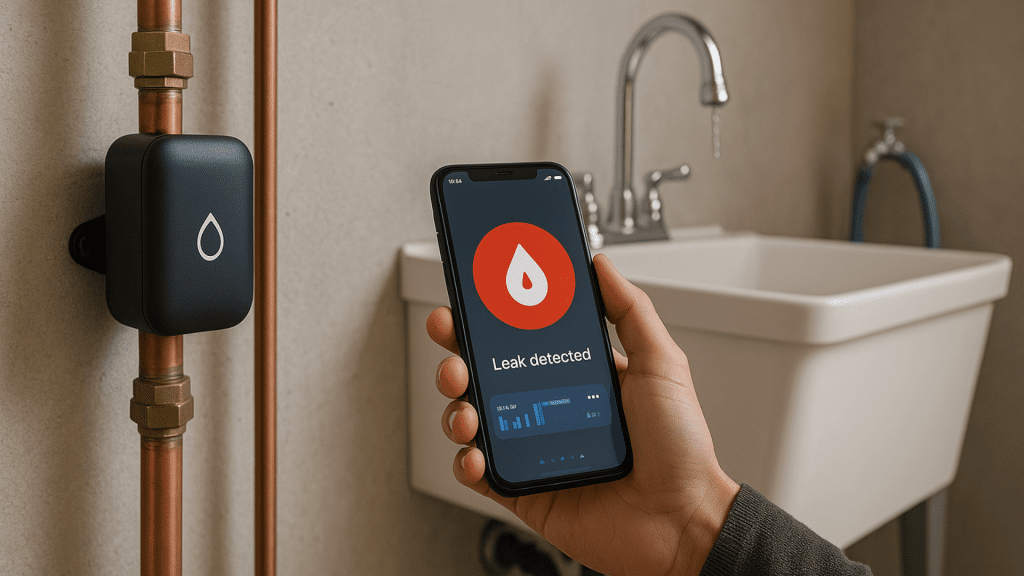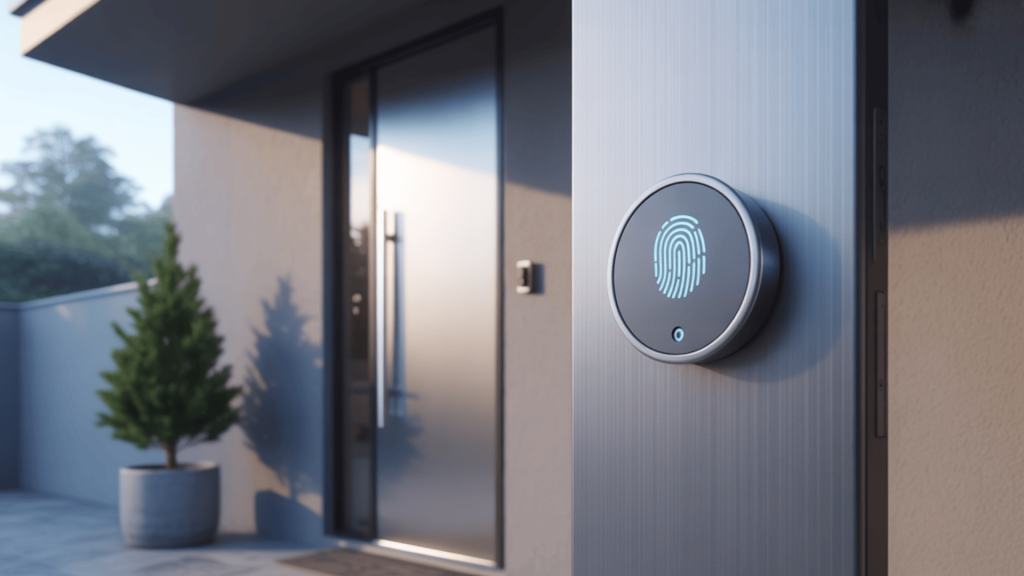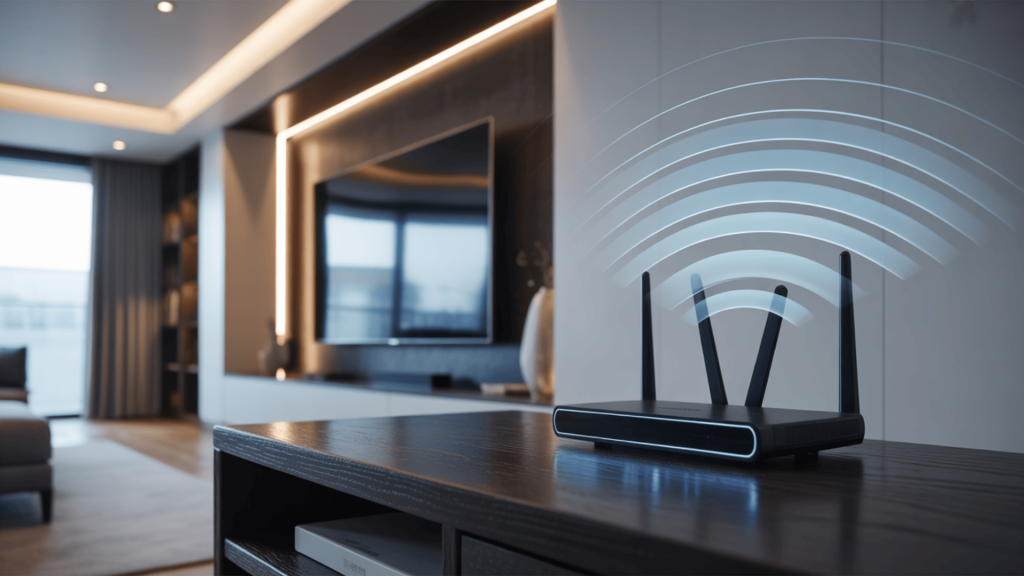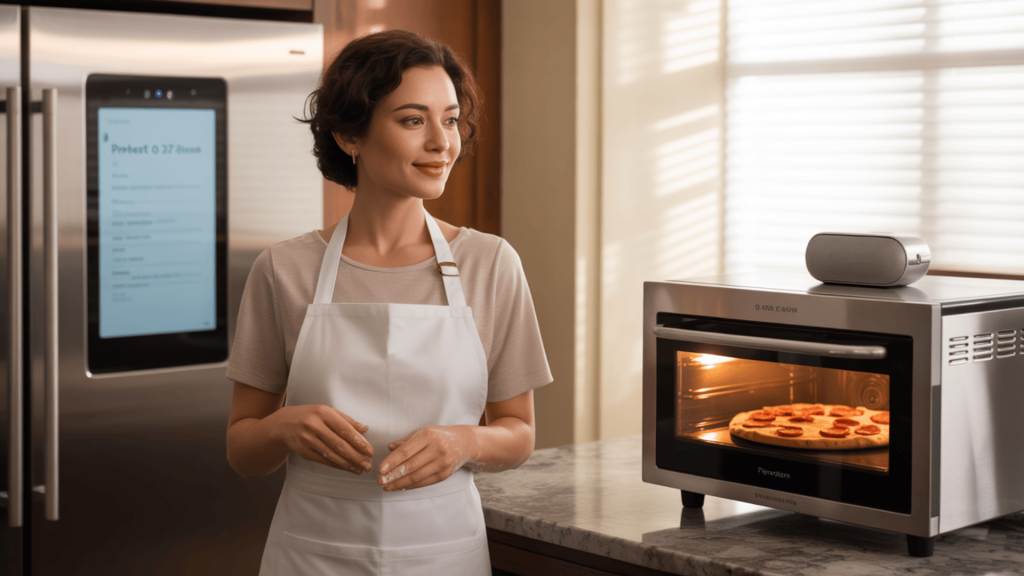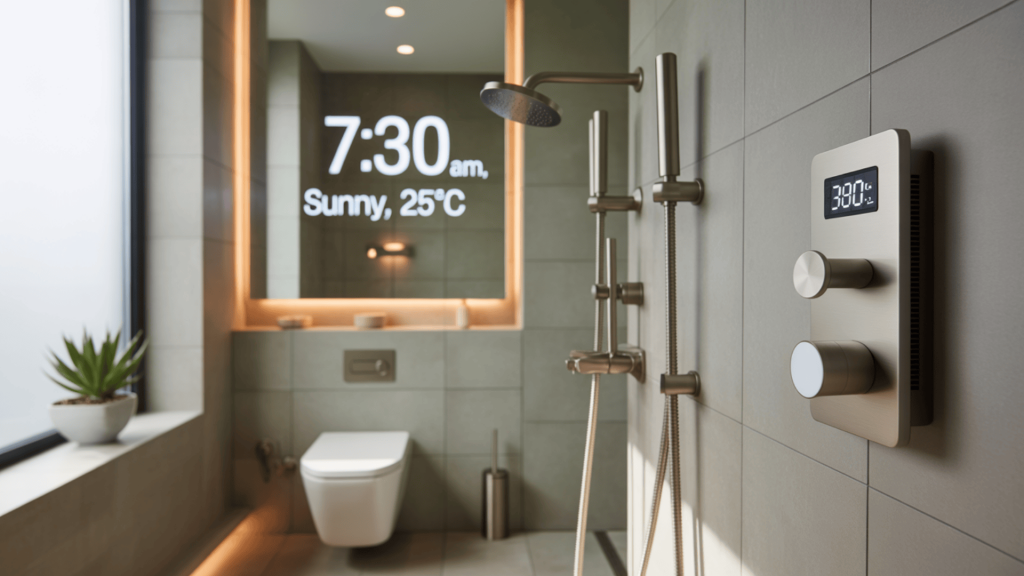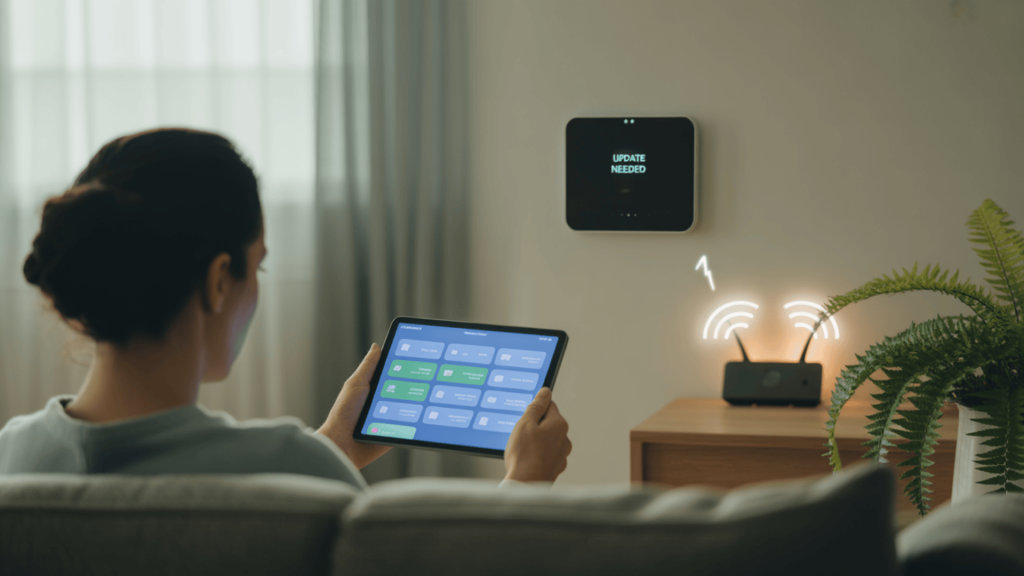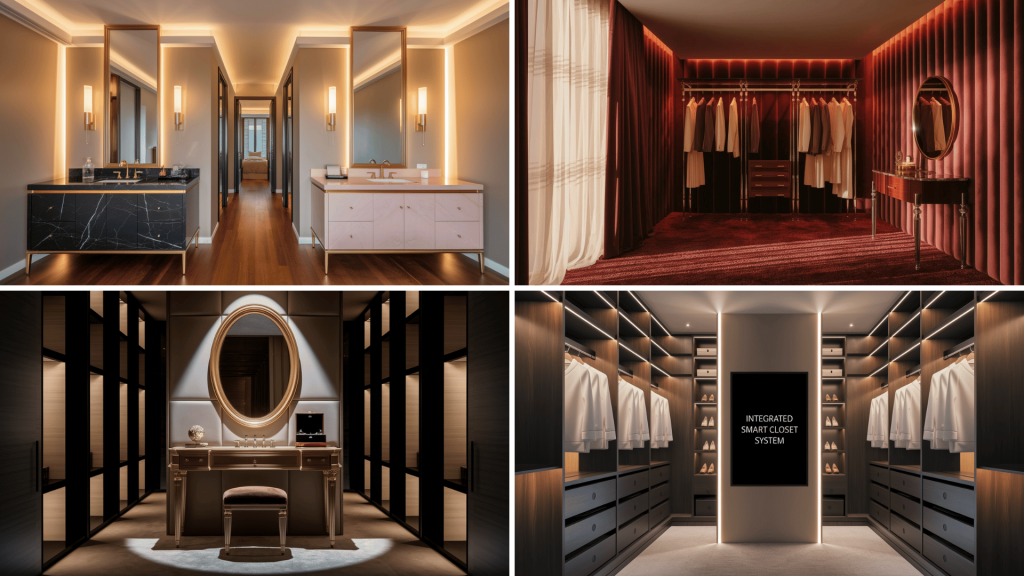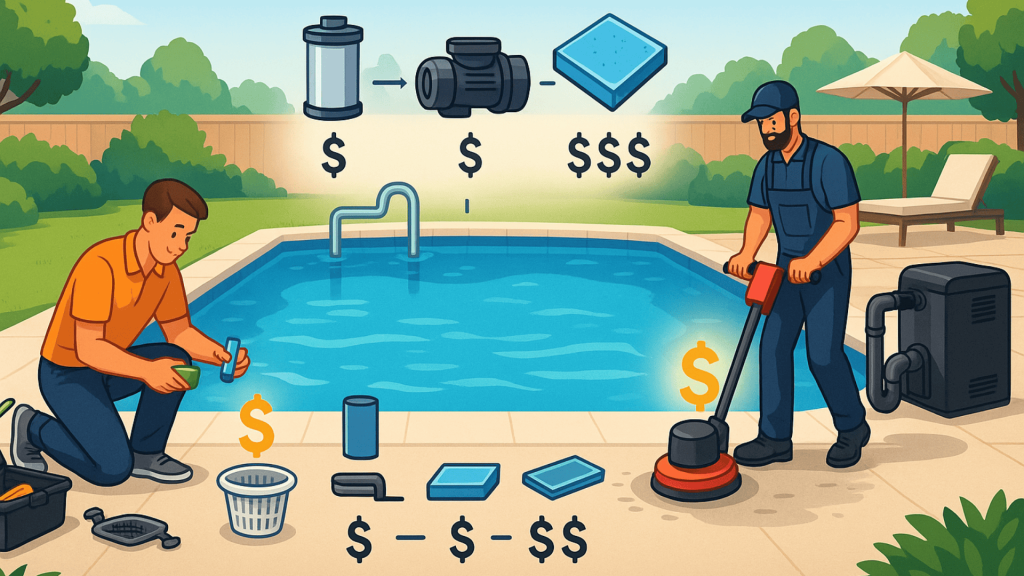Home tech isn’t just for gadget lovers anymore—it’s completely changing how we improve our houses.
Smart home remodeling has moved from sci-fi fantasy to everyday reality, with systems that save money, boost security, and make life simpler.
Gone are the days when upgrading meant just new countertops or fresh paint.
Today’s most valuable renovations connect your lights, locks, thermostats, and appliances to work together seamlessly.
With costs dropping and installation becoming simpler, these upgrades now make sense for almost any budget.
The best part?
These improvements pay you back—both in daily convenience and when it’s time to sell.
Let’s look at the smart upgrades worth every penny.
What is Smart Home Remodeling and Why It’s Worth It
Smart home remodeling combines home upgrades with modern technology to create safer, more functional living spaces.
What was once luxury tech for the wealthy has become accessible to average homeowners, with quality smart doorbells, lighting, and security now affordable for most budgets.
These upgrades offer practical benefits beyond just a modern look.
Smart heating and cooling systems can reduce energy bills by 10-15%, while features like having your home adjust to the perfect temperature before you arrive add real comfort to daily life.
The financial outlook is promising, too.
Research by John Burns Real Estate Consulting shows 65% of homebuyers would pay more for homes with built-in smart technology, making these investments likely to pay off when selling.
Overall, smart home features provide both immediate lifestyle improvements and long-term value, making them a sensible choice for today’s homeowners.
Must-Have Smart Home Features to Include in Your Remodel
When updating your home with modern tech, certain key features stand out for their usefulness and value.
The right choices can turn an ordinary house into a home that responds to your needs and saves money over time.
1. Smart Climate Control Systems
Today’s options let you set different temperatures in various parts of your house, meaning your bedroom can stay cool while the living room stays warm.
Most systems connect to your phone, so you can turn down the heat when you’re away or crank up the cooling before you get home on a hot day.
Many homeowners report saving 10-15% on their energy bills after switching to smart climate control.
These systems learn your habits over time and make tiny changes to save power while keeping you comfortable.
2. Water Management Tools
New water systems watch for unusual flow patterns that might mean a broken pipe or leaky toilet.
When they spot trouble, they send an alert to your phone right away.
The best systems take this a step further—they can shut off your water supply automatically when they detect a serious problem.
This quick action could save you thousands in repair costs, especially if a pipe bursts while you’re on vacation.
These tools also help you track how much water different activities use.
Many homeowners are surprised to learn how much goes to outdoor watering or long showers, helping them make smarter choices.
3. Modern Lighting Solutions
Today’s lighting goes far beyond the basic bulb and switch.
Voice-controlled systems let you adjust brightness or turn lights on and off without getting up from the couch.
Some systems respond to motion, turning on when you enter a room and off when you leave, saving electricity and adding convenience.
Smart lighting also helps with home safety.
You can program lights to turn on and off at different times when you’re away, making it look like someone’s home.
4. Home Safety Upgrades
Home protection has moved well beyond the basic alarm system.
Doorbell cameras show you who’s at your door whether you’re upstairs or across the country.
Two-way talk features let you speak to visitors without opening the door.
Smart locks remove the worry of lost keys.
You can create special codes for different people—one for your dog walker, another for your kids—and track who comes and goes.
The Tech Backbone: Building a Strong Smart Home Network
Without reliable internet throughout your house, even the fanciest gadgets won’t work well.
Having a strong main router placed in a central spot helps ensure all your devices stay connected.
For larger homes, adding extra access points can help the signal reach every corner.
This becomes even more important as you add more devices that need internet access.
The control center you choose matters, too.
Options like Google Nest, Amazon’s system, and Apple’s platform each offer different benefits.
Finding one system that can manage most or all of your home tech makes daily use much simpler.
Making Everything Work Together
When all your devices can talk to each other, using them becomes much easier.
Instead of opening several apps to get ready for movie night, you could use one command to dim the lights, lower the blinds, and turn on your TV.
Thinking about where to place sensors and controls makes a big difference in how well your system works.
Putting motion sensors in hallways and main living areas helps ensure lights turn on when needed.
Making sure controls are easy to reach in each room helps everyone in the house use the system without frustration.
Kitchen & Bathroom Smart Innovations You Shouldn’t Miss
The rooms where we prepare food and take care of personal needs have seen some of the biggest tech changes.
These updates can make daily routines faster, more fun, and less wasteful.
Kitchen Tech That Makes Cooking Easier
Modern kitchen tools connect to make cooking simpler and more exact.
Fridges with inside cameras let you check what you need while at the grocery store.
Some even track food items and suggest recipes based on what’s about to go bad.
Smart ovens take the guesswork out of cooking times.
Some can identify what food you’ve put inside and set the perfect temperature and cooking time automatically.
Voice control really shines in the kitchen, where hands are often wet or messy.
Starting timers, playing music, or looking up recipe steps without touching anything keeps cooking flowing smoothly.
Bathroom Features That Save Water and Add Comfort
The bathroom offers surprising chances for smart upgrades.
New shower systems can heat water to your exact preferred temperature, cutting the waste of running water while waiting for it to warm up.
Modern toilets now include features like heated seats, touchless flushing, and settings that use different amounts of water depending on what’s needed.
These updates not only add comfort but can cut water use by 20% or more compared to older models.
Smart mirrors can display the weather, your calendar, or news while you get ready in the morning.
Some even include lighting that can mimic different settings—outdoor sunshine, restaurant lighting, office lights—to help you check how you’ll look throughout the day.
Whole-Home Experience Enhancements with Audio, Lighting & Climate
Filling your home with music has never been easier.
Today’s sound systems let you play different songs in different rooms, all controlled from one app.
You can start music in the kitchen while cooking, then have it follow you to the dining room when it’s time to eat.
Smart lighting goes beyond simple on/off options.
You can create saved settings for different activities—bright lights for cleaning, softer ones for relaxing, or colorful ones for parties.
Climate systems now work with sensors throughout your home to keep temperatures just right.
If sensors detect a sunny room is getting too warm, blinds might lower automatically and cooling might increase slightly.
Planning Your Remodel: Integration, Wiring & Future-Proofing
Planning ahead saves both money and headaches when adding smart features to your home.
Here’s what to think about at different stages:
| PROJECT PHASE | KEY CONSIDERATIONS | POTENTIAL SAVINGS |
|---|---|---|
| Design Stage | Map all device locations | 15-20% on installation costs |
| Plan central hub placement | Better system performance | |
| Choose main platform (Apple, Google, etc.) | Simpler daily use | |
| Pre-Drywall | Run extra wiring to key locations | 60-70% cheaper than retrofitting |
| Install backing for wall-mounted screens | Stronger mounting options | |
| Place ethernet ports in strategic spots | Faster, more reliable connections | |
| Finishing | Test all systems before final trim | Easier fixes when walls are open |
| Document all wiring locations | Simpler future upgrades | |
| Train all family members on basics | Fuller use of features |
Working with pros who understand both construction and technology makes a huge difference.
The best smart home installers will work alongside your builder or remodeler, ensuring that tech needs are considered at every step.
Common Pitfalls to Avoid in Smart Home Remodeling
Even smart homeowners can make mistakes when adding technology to their houses.
Watch out for these common problems:
- Weak Network Foundation – Adding dozens of smart devices to a basic home network leads to slow performance and dropped connections.
- Brand Incompatibility – Not all smart products work well together, which can result in using multiple apps to control different parts of your home.
- Poor Device Placement – Sensors triggered by pets, curtain movements, or outdoor activity create frustrating false alarms that diminish the system’s usefulness.
- Forgetting About Updates – Smart devices need regular software updates, and some older models eventually lose support, becoming security risks.
- Overcomplicating Simple Tasks – Sometimes a regular light switch is still the fastest way to turn on a light, so make sure your smart features actually simplify your life.
- Ignoring Backup Options – Power outages or internet problems can disable smart systems, so manual overrides for critical functions are essential.
Taking time to plan carefully and consult with experts can help you avoid these common traps and create a system that truly makes your home life better.
Many homeowners find that starting with a few well-chosen smart features and adding more gradually leads to better results than trying to automate everything at once.
The Bottom Line
Smart home remodeling represents more than just following trends—it’s about creating living spaces that truly respond to your needs.
The right tech upgrades can transform how your home functions, from saving energy when you’re away to welcoming you back with perfect lighting and temperature.
As these systems become more affordable and user-friendly, the question shifts from “Why invest?” to “Why wait?”
Homebuyers increasingly expect these features, making them valuable investments rather than luxury splurges.
Start small with a few key upgrades or go all-in with whole-home integration—either way, your future self will thank you.
The home of tomorrow is available today, and it’s smarter than ever.

